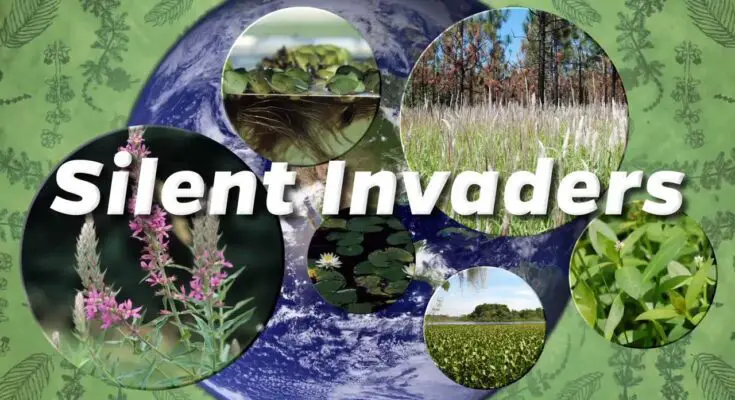Introduction to a Forest Threat
In recent years, North American forests have faced a formidable enemy. This tiny invader, no larger than a grain of rice, has destroyed millions of ash trees across the continent. The impact of this pest has been devastating, affecting urban landscapes, rural forests, and everything in between.
The Beetle’s Origins and Spread
Native to Asia, this destructive beetle was first discovered in North America in 2002. Since then, it has spread rapidly across the United States and Canada, leaving a trail of dead and dying ash trees in its wake. The beetle’s ability to travel undetected in wood products has contributed to its swift expansion across the continent.
Identifying the Culprit
This invasive species is easily recognizable by its metallic green color and small size, typically measuring about half an inch in length. Adult beetles emerge from ash trees in early summer, leaving distinct D-shaped exit holes in the bark. The larvae, which cause the most damage, are cream-colored and can be found beneath the bark, creating S-shaped tunnels as they feed.
The Devastating Impact on Ash Trees
The emerald ash borer has had a catastrophic effect on ash populations across North America. These beetles attack all species of ash trees, regardless of their size or health. The damage caused by the larvae disrupts the tree’s ability to transport water and nutrients, eventually leading to its death.
Signs of Infestation
Identifying an infestation early is crucial for managing the spread of this pest. Some common signs include:
- Thinning and yellowing leaves in the upper canopy
- Increased woodpecker activity on ash trees
- Bark splitting and branch dieback
- D-shaped exit holes on the trunk and branches
- S-shaped tunnels under the bark
Economic and Environmental Consequences
The destruction caused by this beetle extends far beyond the loss of individual trees. The economic impact has been significant, with billions of dollars spent on tree removal, replacement, and treatment. Urban areas have been particularly hard hit, as ash trees are common in city parks and along streets.
Ecological Ripple Effects
The loss of ash trees has far-reaching consequences for forest ecosystems:
- Reduced habitat for wildlife
- Changes in forest composition
- Increased susceptibility to invasive plant species
- Altered nutrient cycling in forest soils
Prevention and Management Strategies
While eradicating this pest completely may be impossible, there are several strategies to manage its spread and protect ash trees:
Chemical Treatments
Insecticides can be effective in protecting individual high-value trees. These treatments must be applied regularly and are most effective when started before infestation occurs.
Biological Control
Researchers have identified several natural predators of the beetle from its native range. These parasitic wasps are being studied and released in some areas as a long-term management strategy.
Quarantines and Regulations
Many states and provinces have implemented quarantines to restrict the movement of ash wood products, helping to slow the spread of the beetle to new areas.
Tree Removal and Replacement
In heavily infested areas, removing and destroying infected trees can help slow the spread of the pest. Replanting with diverse, non-ash species can help maintain urban tree canopies and forest diversity.
Research and Innovation in Pest Management
Scientists and foresters are working tirelessly to develop new methods to combat this destructive beetle. Some promising areas of research include:
- Developing ash tree varieties with natural resistance
- Improving early detection techniques using remote sensing technology
- Exploring novel biological control agents
- Investigating the use of fungal pathogens to control beetle populations
Public Awareness and Education
Raising public awareness about this forest pest is crucial for effective management. Educating homeowners, campers, and outdoor enthusiasts about the risks of moving firewood and how to identify infested trees can help slow the spread of the beetle to new areas.
What You Can Do
- Learn to identify ash trees and signs of infestation
- Don’t move firewood – buy it where you burn it
- Report suspected infestations to local authorities
- Consider treating valuable ash trees on your property
- Plant a diversity of tree species in your yard and community
The Future of Ash Trees in North America
While the outlook for North American ash trees remains uncertain, ongoing research and management efforts offer hope. The development of resistant ash varieties and effective biological control methods may eventually allow for the recovery of ash populations in affected areas.
Lessons Learned and Moving Forward
The invasion of this destructive beetle serves as a stark reminder of the dangers posed by invasive species. As global trade and travel continue to increase, the risk of introducing new pests to vulnerable ecosystems also grows. The experience gained from managing this forest pest can inform future strategies for protecting our forests and natural resources.
In conclusion, the fight against this tiny but destructive beetle continues. Through a combination of research, management, and public engagement, we can work to protect our remaining ash trees and build more resilient forests for the future. The challenge is significant, but with coordinated efforts and innovative approaches, there is hope for preserving North America’s ash trees and the ecosystems they support.



